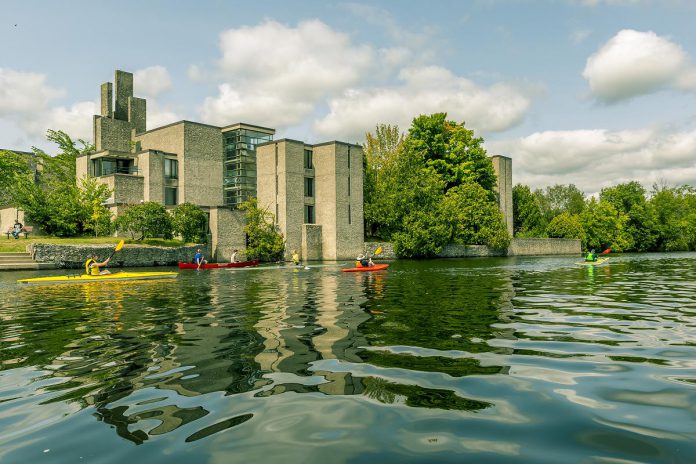
Trent University’s board of governors has endorsed the recommendations of a report on how the university should deal with the legacy of Samuel de Champlain, including by giving Trent’s next college and residence an Indigenous name from the Anishnaabemowin language.
Champlain College, the oldest college on Trent University’s Symons Campus, is named after the 17th-century French colonist and explorer who founded Quebec City and who was the first European to explore and map the Great Lakes. The college also has several pieces of artwork portraying Champlain.
In November 2021, Trent University president Leo Groarke formed a committee to consider and reflect upon the legacy of Samuel de Champlain as it relates to Champlain College, the university, and their communities.
Questions and concerns have been raised at various times about how the university, which created North America’s first Indigenous Studies program in 1969, has recognized Samuel de Champlain, who is considered by some to be a symbol of Canada’s colonial heritage and oppression of Indigenous peoples. The decision to form the committee came shortly after Canada’s first National Day for Truth and Reconciliation, which the university commemorated in Peterborough through a Treaty Rock installation at Symons Campus.
Chaired by Marilyn Burns, the university’s vice-president of communications and enrolement, the Champlain Committee included students, alumni, faculty and staff with a mix of expertise and perspectives that include Indigenous knowledge and scholarship, ethics, history, and heritage.
Over nine months, the committee listened to delegations, received close to 150 written submissions, and hosted an event in which students were encouraged to review studies of Champlain and share their own insights and questions about his legacy.

The result is a 28-page report with eight recommendations that the university’s board of governors endorsed on Friday (October 14).
The recommendations include permanently moving the artwork depicting Champlain from Champlain College to the university’s archives or library with contextual information and corresponding Indigenous artwork, introducing a new “cornerstone” at Champlain College to recognize Indigenous people and language (in particular Anishnaabemowin), and retaining the name of Champlain College but adding cultural context to the name by giving Indigenous names to the college’s buildings and spaces.
The report also recommends giving Trent University’s next college and residence — to be built at Trent University’s Symons Campus by 2027 — an Indigenous name from the Anishnaabemowin language, in consultation with Elders and local First Nations.
“In the end, the Committee was confronted with the knowledge that any conclusion would be unsatisfactory based on the pull of so many impassioned views on the importance of names and symbols,” reads the report’s summary. “It was also faced with the imperative to pass judgment on a historical figure. We landed on an imperfect conclusion, as any would be under the circumstances: that Samuel de Champlain is deserving of judgment and scrutiny but, as some urged, not to be forgotten.”
“Consensus was reached by the Committee based on an educational environment and perspective: that we have learned more through this process of questioning and that learning will be better enabled by keeping the Champlain name and continually placing it in the context of the history of the Nations at the time. In particular, the Committee heeded the words of those Indigenous respondents and leaders who advocated for informing history instead of erasing it — and the reality that, if we erase history, it is likely to repeat itself and this cannot be allowed to happen.”
“By recommending the continuation of the Champlain name with historical context, and recommending Indigenous naming of particular structures and the next College as determined through extensive outreach with Elders and treaty holder First Nations, the Champlain Committee believes that truth, reconciliation and an understanding of history will be realized in its best form — through ongoing learning and dialogue.”
PDF: Report of the Champlain Committee – Fall 2022
Report of the Champlain Committee - Fall 2022
This report is also available at Trent University’s website at www.trentu.ca/champlain-committee.



























